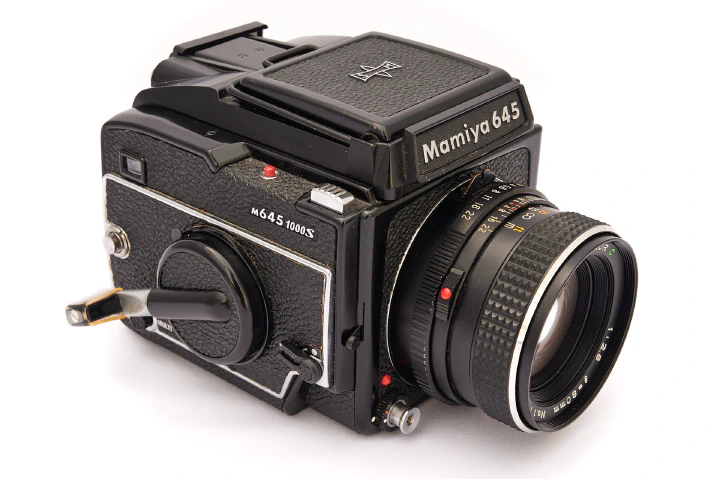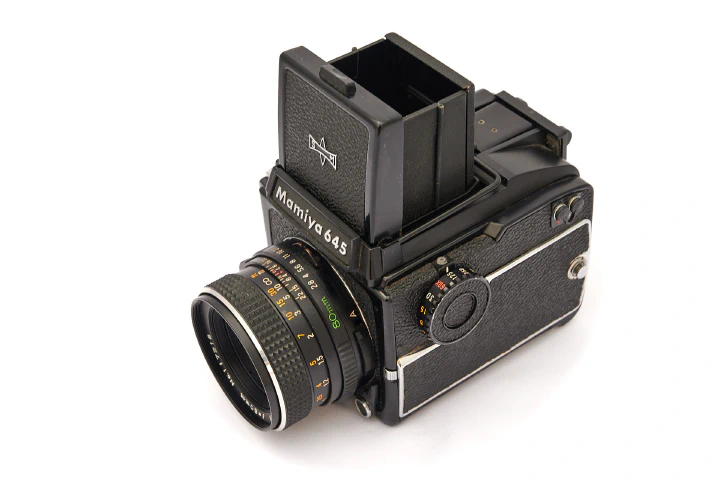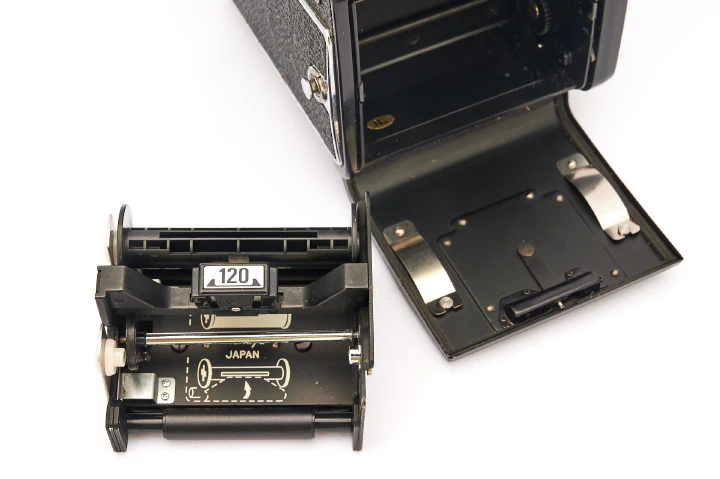The Mamiya M645 is one of my favourite medium-format cameras. It is simple and fairly compact, yet it offers quality, high-resolution photographs and is a joy to use.
A brief history of the Mamiya M645
The Mamiya M645 is a medium-format single-lens reflex (SLR) camera system manufactured by Mamiya, a Japanese camera manufacturer. Launched in 1975 as part of the Mamiya 645 series, the camera system encompassed a diverse range of lenses and accessories.
Over the years, Mamiya refined and expanded the M645 series, introducing new models and augmenting its features. These advancements included the introduction of TTL metering, enhanced viewfinders, motorised film winding options, and other improved accessories.

In 1982, Mamiya introduced the Mamiya M645 J, a simplified and more economical version of the M645 series. Designed to cater to photographers seeking the advantages of medium-format photography without the complexity or higher cost associated with the other models within the M645 series, the M645 J offered a more accessible entry point.
Two particularly noteworthy iterations of the M645 series were the M645 Super and the M645 Pro. The M645 Super, introduced in 1985, enhanced the system’s ergonomics, provided a brighter viewfinder, and expanded compatibility with a broader spectrum of accessories. The M645 Pro, introduced in 1993, further elevated the system’s capabilities by incorporating autofocus (Mamiya 645 AF released in 1999), refined metering systems, and additional features tailored specifically for professional photographers. In December 2001, the 645 AFD was released, which was compatible with film or digital backs.
The things I like about the Mamiya M645
I have the Mamiya M645 1000S, as shown on this page. My comments, therefore, are mostly based on my experience with this model.
Medium Format Advantage
The M645 camera system utilises 120 and 220 (the latter is no longer available) roll film in the 6x4.5cm format. This format is notably larger than 35mm film but smaller than what many consider true medium format (typically 6x6 cm, 6x7 cm and 6x9 cm). In my opinion, the 6x4.5 cm format strikes an excellent compromise. The larger negative size enables higher image quality (greater enlargement capabilities without image degradation) while also providing fifteen frames per roll, making it more economical (a crucial consideration given the current high cost of film).
Lenses
Most photographers would agree that Mamiya’s lenses are exceptional. The M645 uses interchangeable lenses, and Mamiya provides a comprehensive selection of lenses with a wide range of focal lengths and apertures, catering for most photography genres.
System Compatibility
The M645 is a modular camera that offers a wide range of accessories and add-ons, such as viewfinders, bellows, and macro tubes, enabling it to adapt to various photographic applications. My camera features a waist-level finder, which I like a lot. However, I have the option to replace it with an eye-level finder should I wish to do so.

Ergonomics
I find the ergonomics of the M645 offer comfortable handling. The controls are simple, well laid out, intuitive and easy to use. For a medium-format camera, it is fairly compact, especially when compared with its big brother, the Mamiya RB67.
Build Quality
Mamiya cameras are known for their robust construction and durability. The M645 is no exception, featuring a sturdy build that can withstand the rigours of use in various environments. My model is all metal construction, and it feels solid and robust. Later models were plastic.
What I don’t like about the Mamiya M645
I only have one minor gripe about my Mamiya M645. Namely, it does not have an interchangeable back (some later models did). This means I can’t swap film backs, enabling me to quickly swap out film types (black-and-white, colour, and different ISO). I have to finish the roll first.

